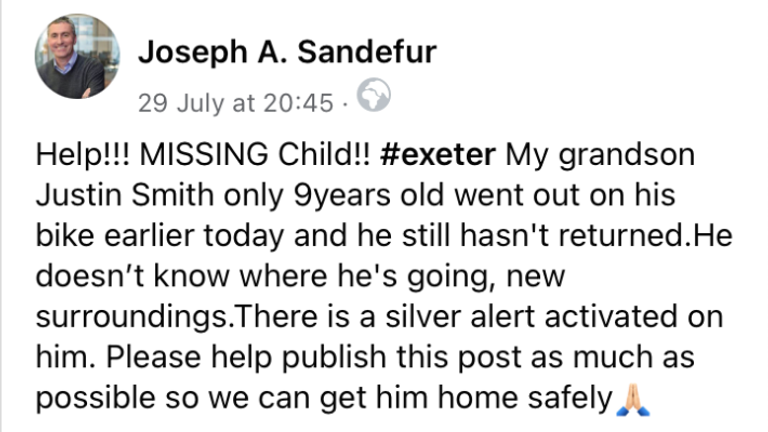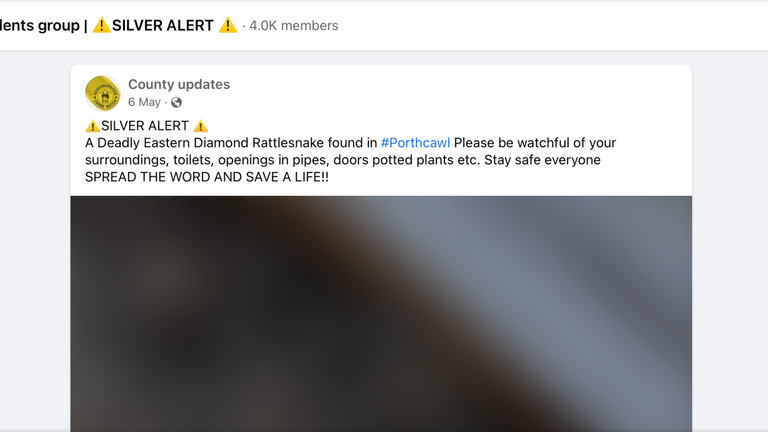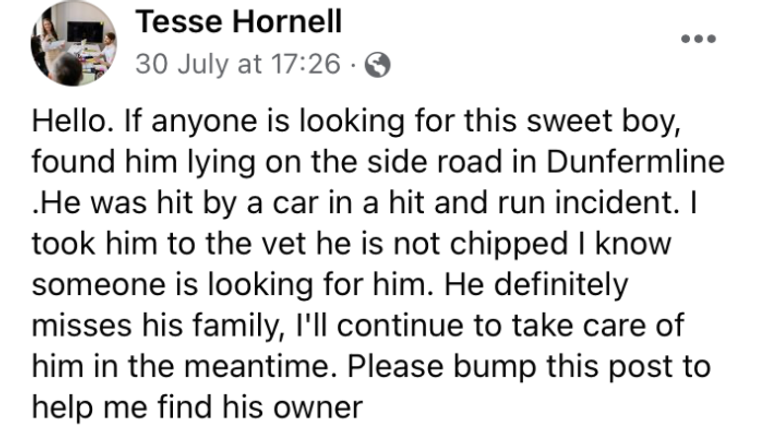Facebook groups are being “overwhelmed” by hoax posts about serial killers, missing children, and animals, a charity has warned.
Full Fact said it had identified at least 1,200 examples of such misinformation across more than 100 areas in the UK, suggesting the content is being replicated.
One hoax about a nine-year-old boy named Justin Smith going missing has been shared hundreds of times.
Full Fact saw examples in groups from Devon to Lincolnshire, all opening with “Help!!! MISSING Child!!” and the location’s hashtag, followed by an appeal to “publish this post so we can get him home”.
The posts all use the same picture of a boy holding a white dog on a lead, seemingly in a pet food shop.
But it’s not real – and the actual picture appears to be from a genuine New York City police appeal about a missing teenager who has already been found.

Some posts have been fact-checked and blurred, but users can unblur them
Another example appeals for information about the owners of a dog injured in a hit-and-run, which was shared in groups across numerous towns in Scotland.
But the picture used appeared to be from a US vet’s website.
Other hoaxes include a warning about an escaped rattlesnake, urging everyone to “spread the word and save a life”, and reports of a serial killer who “drives a truck with LED lights”.
Both have been replicated in groups dedicated to different communities in the UK.
In the case of the “serial killer”, a photo used in one of the posts was found to be a man from Tennessee who was wanted for completely unrelated offences.
Read more:
Youngsters turning to TikTok for news
‘Misleading’ ads appearing on Facebook
The man behind history’s fastest growing app

An example of a hoax post on Facebook
What is the point of these posts?
Full Fact editor Steve Nowottny said they were designed to “terrify local communities” and “sow needless fear”.
He said it meant genuine warnings and appeals were at risk of being buried or ignored.
“The hoaxers have clearly identified the massive reach these posts can have and local Facebook groups across the world are now becoming overwhelmed with false information,” he warned.
Some posts have also been edited to include links that appear to take users to the websites of legitimate firms and organisations.
But they in fact arrive via an unconnected third-party website and affiliate link, earning someone a small fee.
Full Fact, which has been working with Facebook since 2019 to help fact check posts, said it had written to the platform’s parent company Meta about the risks posed by these posts.
It suggested the rise in cases could have been driven by a change to how public groups on Facebook operate, introduced in 2021, which made it possible for members to join without admin approval. Admins were still able to restrict who posted and commented.
A spokesperson for Meta said: “We’ve built the largest global fact-checking network of any platform, partnering with more than 90 independent fact-checking organisations including Full Fact, to tackle misinformation online.
“Fraudulent activity is not allowed on our platforms and we removed the posts Full Fact brought to our attention for violating our community standards. While no enforcement is perfect, we continue to invest in new technologies to stop scams and the people behind them.
“We also introduced new tools last year to help Facebook Group admins prevent the spread of misinformation and manage interactions in their groups.”

This hoax post was shared hundreds of times
How can you spot a hoax post?
Full Fact has listed things to look out for that could help you spot a hoax on Facebook.
One overarching piece of good practice is to check whether a post has been edited. You can do this by clicking on the three dots in the top right of a post.
The other things to watch out for are:
1. Disabled comments – if the appeal is genuine, chances are the poster will want you to be able to reply.
2. Duplication – highlight some text, copy and paste it into the Facebook search bar, and see if it exists elsewhere.
3. Images – many hoax posts reuse pictures from other Facebook pages or websites, while some may obviously not come from the UK. Keep an eye out for foreign police cars or road signs, for example.
4. Page or profile – posts made by a newly-created page with little content, rather than a profile, are a red flag.
5. Language – be wise to Americanisms or other sayings that a British person likely wouldn’t use. A good example is “silver alert” in the case of a missing person, which is a US notification system.
6. Favourite emojis – just as the “crying with laughter” is rarely a sign that someone in your WhatsApp group has actually found your joke hilarious, red pins and sirens are not a genuine sign of danger and are a favourite tactic of hoaxers to grab your attention.







